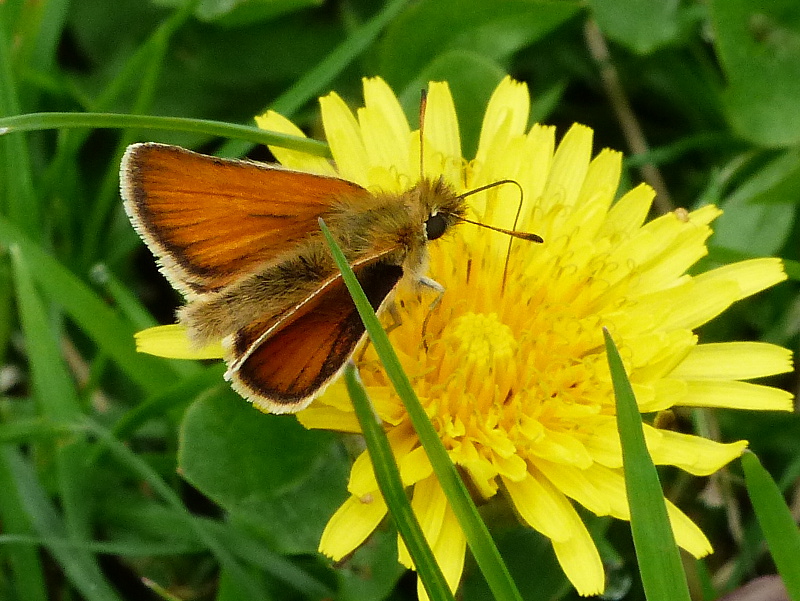
| Butterfly Conservation |
 |
| Hertfordshire & Middlesex Branch |
 |
|
|||
| Saving butterflies, moths and our environment | ||||

_DSC_0144_10July_SCPtn-2.jpg)
Essex SkipperThymelicus lineolaWidespread but declining resident Distribution and Status Since the surveys began in the 1980s there has been an alarming decline in the Essex Skipper both in terms of distribution and abundance. It is now found in only about a third of tetrads in our area compared to around a half at the turn of the century. It is not clear why although loss of habitat could be a factor. Because females emerge with immature eggs, nectar sources are very important for food to increase their reproductive potential (Field et al.) Habitat Requirements Tall uncut grassland, in fields, roadside verges and edges of woodland Larval Foodplants Cocks-foot Dactylis glomerata and Creeping Soft-Grass Holcus mollis. Timothy Phleum pratense, False Brome Brachypodium sylvaticum and Tor Grass B. pinnatum are also sometimes used Adult Food Sources Cow Parsley Anthriscus sylvestris, Thistles Cirsium sp. Behaviour/Observation notes Cloudy weather, early morning or evening when the skippers are most likely to be at rest, are the times to distinguish between this species and the similar Small Skipper. If either species is a male, then the nature of the sex brand on the forewing determines the species it relates to. A straight narrow line parallel to the edge of the forewing is suggestive of an Essex Skipper whereas a more crooked line indicates a Small Skipper. However, this distinguishing feature is probably not as reliable as the undersides of the antennae. If they are jet-black, the butterfly is an Essex Skipper otherwise if it is more orange-brown it is a Small Skipper Life History This species is on the wing from the end of June until mid August with a peak in the second week of July so there is some significant overlap with the Small Skipper although its flight season generally begins about two weeks later. Eggs are laid on the sheaths of grasses and hatching does not occur until the following spring when the larvae feed within tubes spun from the leaf blades. A cocoon is formed among the vegetation for pupation to take place Further information
Identifying Skippers References
Field, R.G, Watkins, G. and Gardiner, T. (2005), The Use of Countryside Stewardship Scheme Field Margins by the Small Skipper Thymelicus sylvestris, Essex Skipper Thymelicus lineola and Large Skipper Ochlodes venata, The Entomologist's Record and Journal of Variation, Vol 117 Pt 5 pp. 197-203 |
Copyright Butterfly Conservation © 2019 Hertfordshire & Middlesex Branch
Privacy and Copyright Statement and Cookie Policy Statement
Butterfly Conservation
Company limited by guarantee, registered in England (2206468)
Registered Office: Manor Yard, East Lulworth, Wareham, Dorset, BH20 5QP. Tel: 01929 400 209
Charity registered in England & Wales (254937) and in Scotland (SCO39268). VAT No. GB 991 2771 89